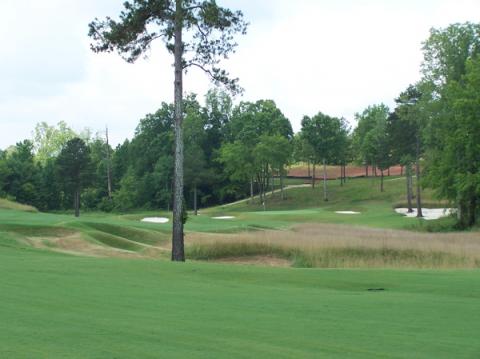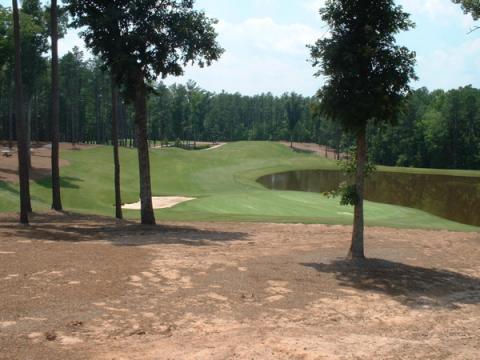
The community of Madison Lakes, with a twisting golf course layout by Michael Young, is just two miles from the downtown area of Madison, GA, one of the best small towns in America.
Rant alert! I am tired of many national magazines ignoring small southern towns when they do their little roundups of "best places to live" or, in the case of the latest article, "10 Coolest Small Towns."
I picked up a copy of Arthur Frommers "Budget Travel" magazine in the lobby of a hotel in San Francisco the other day. The "Coolest" article featured 10 towns under 10,000 in population that "rival larger cities when it comes to good food, culture, and quality of life." Not a single town in the southern U.S. between the Atlantic coast and New Mexico made the list. Ridiculous.
Port Jervis, NY, is a perfectly nice town at the junction of the New York, Pennsylvania and New Jersey borders, but it isn't any more "cool" than Madison, GA, which has the added benefit of being just an hour from the Atlanta airport. I'm sure the folks in Yellow Springs, OH, love their town (the artsy Antioch College is there), but being 21 miles from, ahem, Dayton, is no more an attraction than being a similar distance from Columbia, SC, as is the quaint college town of Newberry, SC, which also boasts some excellent restaurants in its small downtown. And what about Waynesville, NC, just a half hour from Asheville, a mountain town which I will visit the first week in September. Waynesville is smack dab in the middle of the Blue Ridge Mountains, with tons of recreational outdoor activities available, and great golf communities and great views.
borders, but it isn't any more "cool" than Madison, GA, which has the added benefit of being just an hour from the Atlanta airport. I'm sure the folks in Yellow Springs, OH, love their town (the artsy Antioch College is there), but being 21 miles from, ahem, Dayton, is no more an attraction than being a similar distance from Columbia, SC, as is the quaint college town of Newberry, SC, which also boasts some excellent restaurants in its small downtown. And what about Waynesville, NC, just a half hour from Asheville, a mountain town which I will visit the first week in September. Waynesville is smack dab in the middle of the Blue Ridge Mountains, with tons of recreational outdoor activities available, and great golf communities and great views.
I found an interesting web site, SmallTownGems.com , which offers comment about as well as photographs of towns across the nation. Most states are represented, and the editors of the site rate the towns by "approved" and "disqualified" (for those towns they have visited); "candidates" for those they have heard good things about but haven't yet visited; and "hall of shame" (presumably for those where they were either mugged on the street or poisoned in a local restaurant). Like the magazines, their choices are all subjective, but at least they don't discriminate against small southern towns.


























